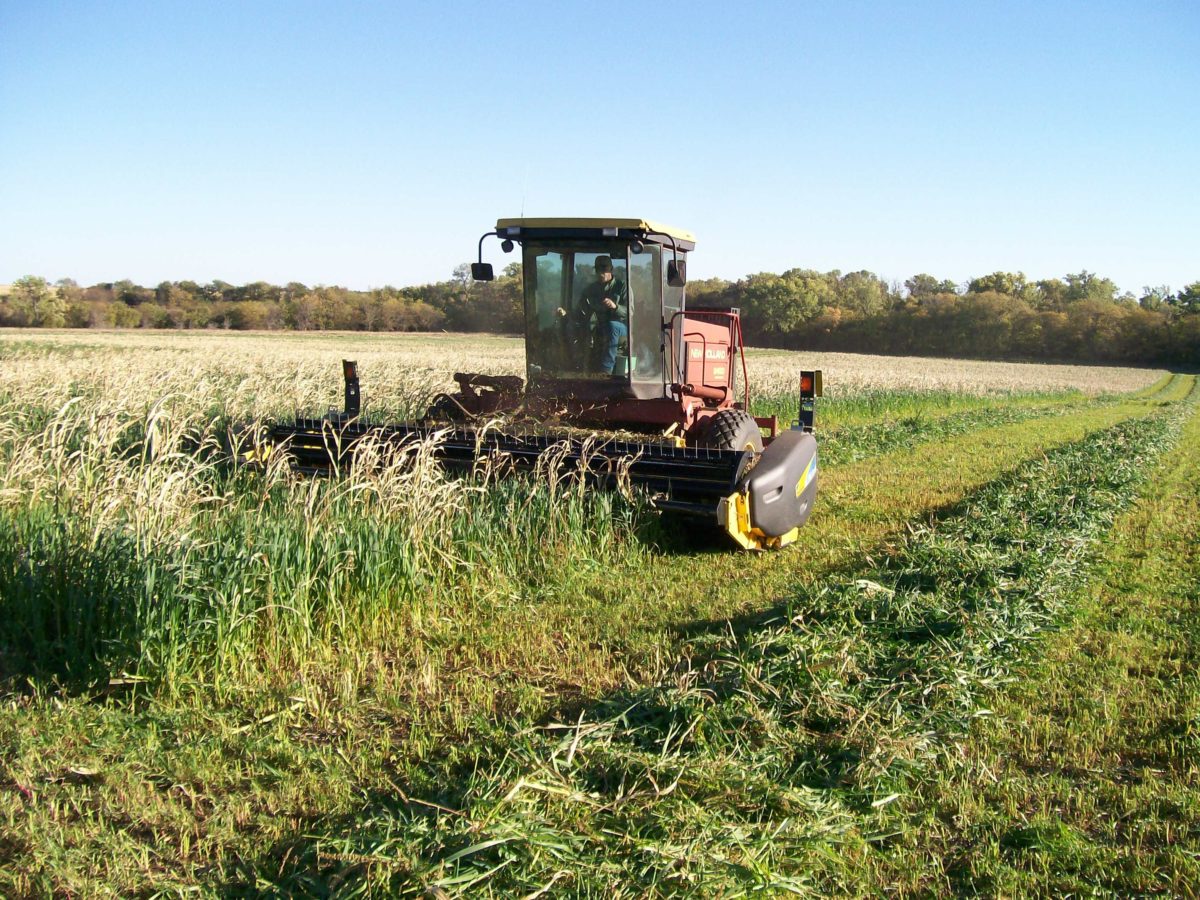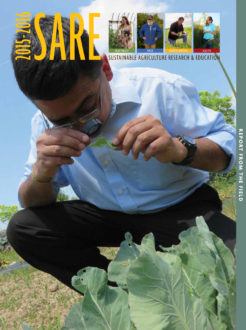SARE: ADVANCING CROP AND LIVESTOCK INTEGRATION
Grown on an estimated 10 million acres across the country, cover crops are becoming an indispensable part of crop rotations. To maintain this momentum, the development of reliable information at the local level—how to craft a diversified rotation that pays—needs to keep pace with growth in farmers’ interest.

“Obviously we’ve been hearing more and more about cover crops. We are familiar with the benefits, especially after wheat, of further utilizing the soil resource and building up organic material,” says Roe, a sixth generation farmer who has 1,500 acres in no-till crop production and backgrounds 3,000 cattle per year. “We were interested in trying them out as part of our rotation.” Backgrounding is a stage (method) of beef production where excess calves are raised on high quality feeds including grain, forage and pasture.
That is what motivated Josh Roe to use a SARE grant to explore the economics of grazing and haying cover crops in a corn-soybean-wheat rotation on his family’s farm in North Central Kansas, where no-till is common but cover crops are rare. After one year of trials, Roe has seen many benefits that he likes, from profitability to system flexibility to improved resilience.
Working with a Kansas State University agronomist, Roe established a cover crop mix following wheat and compared the economics of three treatments: haying, grazing and terminating the cover crop without incorporating livestock. The cover crop mix included oats, spring field peas, radishes, turnips and sorghum, except that the hay treatment excluded radishes and turnips.
With high hay prices and particularly favorable weather for cover crop growth in 2014, Roe, an economist by training, used sensitivity analysis to evaluate profitability at various price and yield levels. He harvested 1.59 tons per acre and, based on his costs, estimated a break-even point of $73 per ton, or nearly 20 percent below that season’s price.
“We had very good luck with these trials, good rain, decent hay and cattle prices,” Roe says. “We realize these results may not be replicable year after year, so we’re going to keep looking at how these systems perform under different conditions.”
There was an immediate soil-health benefit from his trials, too, when a May rainfall of 9 inches in less than two hours caused heavy flooding in the area. “We still had some flooding, but without the cover crop residue I can’t imagine how bad the erosion would have been—if it had been just bare soil or the previous year’s wheat stubble,” he says.
Going forward, Roe plans to continue using cover crops for both grazing and haying, because the management flexibility it allows is a plus. “Looking at a combined system like this is interesting,” he says. “Maybe there’s a time you can’t graze because it’s wet and you’re worried about compaction, then you can feed stockpiled forage from another hayed field.”
Roe says there has been a lot of interest in his trials among farmers, Extension agents and county conservation district staff in the area. Along with hosting on-farm field days, he has been asked to speak at numerous events about his experiences with cover crops.
For more information, see the project reports for grant FNC14-971.
Free Resources!
SARE topic room: Cover Crops. Find dozens of free educational materials in this one-stop shop.
SARE bulletin: Cover Cropping for Pollinators and Beneficial Insects (order free copies or download).
National Conference on Cover Crops and Soil Health: Recordings of in-depth breakout sessions are online.
Conduct topical searches of hundreds of educational resources, including cover crops and integrated crop and livestock systems.
